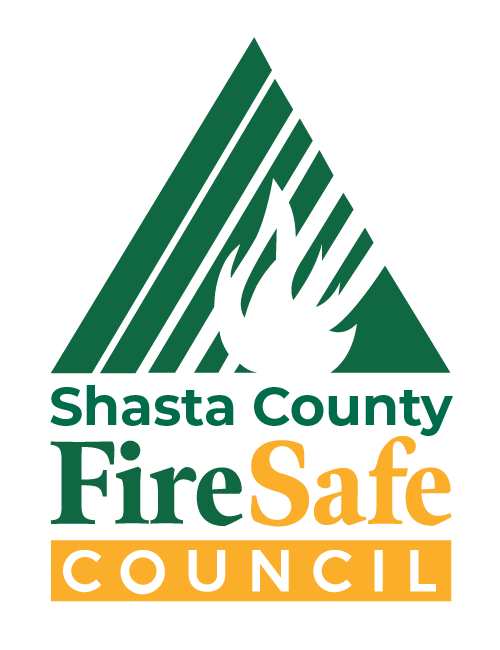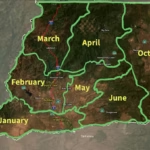How to Handle Ash After A Wildfire
- For information about Ash when Returning Home After a Fire
- For information about Ash Cleanup
- For information about Swimming Pools impacted by Ash
Reduce Exposure to Ash When Returning Home After a Fire
Guidelines from the California Department of Public Health (CDPH)
If you live near homes that burned, you should be aware of possible hazards to your health, even if your home was not damaged by the fire.
Ash and debris from burnt structures may be blown indoors and into areas not affected by the fires. Ash contains toxic substances and may be irritating to the skin, eyes, nose and throat. Ash is unhealthy to breathe and may trigger asthmatic attacks.
Following these simple tips will reduce your exposure to ash and protect your health:
Keep Ash Away
- Do not allow children to play in the ash and wash off children’s toys before children play with them.
- Immediately wash any part of your body that touches ash to avoid irritation. The best protection for children is to keep them indoors to reduce their exposure until ash has been removed.
- Wash fruits and vegetables from your garden thoroughly before eating them.
- Remove shoes before entering your home or use “sticky mats” in entryways and doors to remove dust and ash from your shoes. Sticky mats are sold in hardware stores.
- Keep pets out of ash areas and wash pets when they have been exposed to ash.
Keep Your Indoor Environment Clean
- Frequently clean indoor surfaces and follow by wet mopping to reduce exposure to ash indoors.
- Use only high efficiency particulate air (HEPA-filter) vacuum cleaners. Shop vacuums and other common vacuum cleaners do not filter out small particles, but instead can put particles back into the air where they can be inhaled.
Wear Protective Clothing and a Respirator When Working Outside
- Do not use leaf blowers or do any activities that will put ash into the air.
- Wear gloves, long sleeved shirts, long pants, socks, and shoes to avoid skin contact with ash and other debris.
- Double bag ash in plastic bags or other containers. Be sure to seal all bags or containers to prevent ash from being redistributed in the environment by wind or rain.
- Use a well-fitted NIOSH-certified air-purifying respirator N-95 mask. Due to COVID-19, only N-95 masks that do not have one-way-valves should be used. If you must wear an N95 with a valve, wear a fabric face covering over top of it.
- The National Institute for Occupational Safety and Health (NIOSH) is the only agency that certifies respirators to determine that they adequately protect people. Look for NIOSH approval on the package or label.
Safe Ash Cleanup After Wildfires
Control
- Do NOT use leaf blowers to clean up ash.
- Leaf blowers re-suspend harmful fine particles into the air and create more health concerns.
- Only use household vacuums or shop vacuums with HEPA filters.
- Standard household and shop vacuums re-suspend harmful fine particles and create more health concerns.
- Children or pets should not be nearby while you clean up ash.
- Do not allow children or pets to play in ashy areas.
- Make sure to clean ash off all children’s toys and climbing structures before use
- Make sure to clean ash off pets.
Contain
- Before sweeping indoor and outdoor hard surfaces, mist them very lightly with water to keep dust down. When you wet down ash, use as little water as you can.
- Sweep gently with a push broom into a pile, then lightly mist with water before scraping up pile.
- After sweeping, mop with a damp cloth or hose lightly with water into a vegetated area.
- Take care to conserve water. Do not allow water to go down the driveway, down the street, or into storm drains. You may allow water to drain into landscaping as ash will not hurt plants or grass.
- Scrape ash and debris into plastic bags, seal, and dispose in the regular trash.
- If you suspect hazardous waste, including asbestos, is present, contact your local hazardous waste authorities regarding appropriate disposal.
- Commercial cleaning may be needed for carpets, upholstery, and window treatments, especially near high traffic entrances where ash may get tracked in.
Capture
Ash has a high pH and, in large amounts, can be harmful for people, the environment, and aquatic life. It can also clog storm drains and pipes, which can cause flooding. To prevent this:
- Avoid Washing ash into storm drains.
- Divert water away from storm drains or try to filter the wash water with gravel bags, filter fabric, weighted wattles, etc., in front of storm drains. Scoop up captured ash and debris and dispose of appropriately, or vacuum with a wet/dry shop vac.
- You can make your own water capture system by rolling up beach towels and putting them in plastic trash bags, and then laying those around the wash areas. Vacuum up water or divert into a landscape area.
- If washing your roof, redirect downspouts to landscaped areas.
- Take your car to a car wash or wash it over a vegetated area such as your lawn.
Swimming Pools Impacted by Smoke and Ash
The following guidelines are recommended by the Sonoma County Department of Heath Services for the maintenance of pools impacted by smoke and ash contamination or fire damage. Do not allow use of the pool until the following steps have been completed:
- Clean skimmer baskets of debris and skim water surface of pool with pool net to remove floating debris.
- Brush sides and bottom of pool to loosen contaminants. Vacuum pool.
- Backwash and clean filter, discharging waste to municipal sanitary sewer only. If connected to a septic tank system, discharge the backwash to a pervious surface (gravel, lawn, open space) to allow for infiltration without erosion. Backwash to the storm drain system (alleys, driveways, streets, storm drains) and creeks is prohibited by law.
- Check pH and adjust to between 7.2 and 7.8.
- Check free chlorine level and adjust to minimum of 2.0 ppm.
- Ensure the recirculation system is operating properly by checking filter pressure and/or flow meter.
- Reopen pool to bathers when pH levels between 7.2 and 7.8 and free chlorine is at least 2.0 ppm and not more than 10 ppm.
- Due to the amount of smoke and ash in the air, these steps may need to be repeated after cleaning the filters.
- Alternatively, a swimming pool service company may be contracted to clean the pool. Check for their business license and experience in servicing pools. Pool service operators likewise are prohibited from discharging backwash to the storm drain system.
Deck Cleaning: Do not hose down the deck to storm drains. You may spray water lightly to minimize dust and ashes from becoming airborne, then use a stiff brush or broom to sweep up small amounts of ash and debris. A mop and bucket could also be used for cleanup. Large amounts of ash and debris may need to be cleaned by a professional hazardous material cleanup service.
Draining Pools: Draining of pools is not recommended. If you must drain the pool, contact the sanitation agency of your local jurisdiction for guidance. Never empty swimming pool water and/or chemicals to the storm drain.
Mosquito Breeding: Pools with standing water could breed mosquitoes. Please contact the Shasta Mosquito and Vector Control District https://www.shastamosquito.org/how_do_i/report_a_mosquito_issue.php to have staff come and evaluate your pool.
Damaged Pool, Enclosure or Recirculation System: For pools that have had damage to the recirculation system, the pool enclosure, or the pool shell, contact a pool professional for evaluation.




